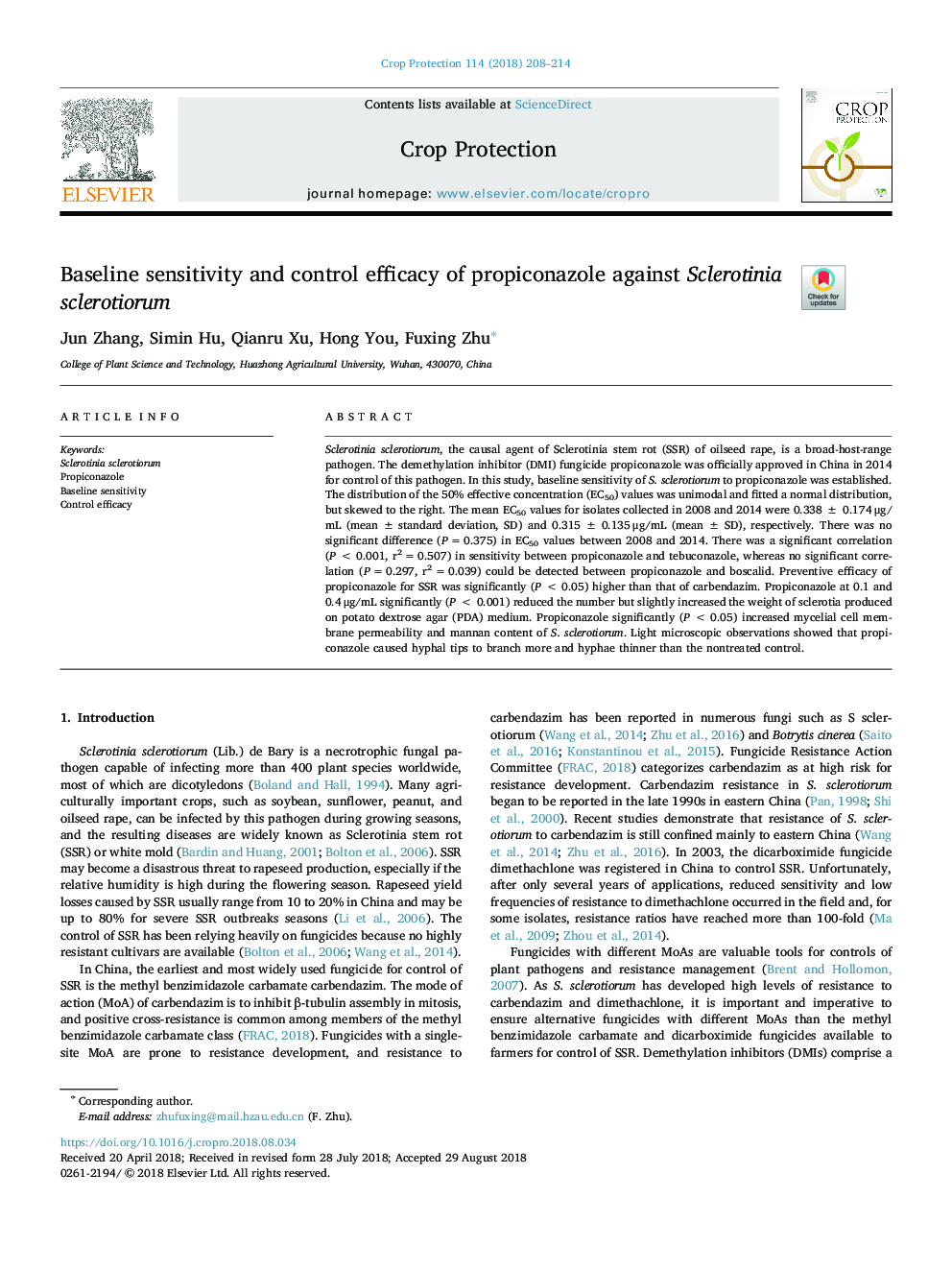| Article ID | Journal | Published Year | Pages | File Type |
|---|---|---|---|---|
| 10116586 | Crop Protection | 2018 | 7 Pages |
Abstract
Sclerotinia sclerotiorum, the causal agent of Sclerotinia stem rot (SSR) of oilseed rape, is a broad-host-range pathogen. The demethylation inhibitor (DMI) fungicide propiconazole was officially approved in China in 2014 for control of this pathogen. In this study, baseline sensitivity of S. sclerotiorum to propiconazole was established. The distribution of the 50% effective concentration (EC50) values was unimodal and fitted a normal distribution, but skewed to the right. The mean EC50 values for isolates collected in 2008 and 2014 were 0.338â¯Â±â¯0.174â¯Î¼g/mL (meanâ¯Â±â¯standard deviation, SD) and 0.315â¯Â±â¯0.135â¯Î¼g/mL (meanâ¯Â±â¯SD), respectively. There was no significant difference (Pâ¯=â¯0.375) in EC50 values between 2008 and 2014. There was a significant correlation (Pâ¯<â¯0.001, r2â¯=â¯0.507) in sensitivity between propiconazole and tebuconazole, whereas no significant correlation (Pâ¯=â¯0.297, r2â¯=â¯0.039) could be detected between propiconazole and boscalid. Preventive efficacy of propiconazole for SSR was significantly (Pâ¯<â¯0.05) higher than that of carbendazim. Propiconazole at 0.1 and 0.4â¯Î¼g/mL significantly (Pâ¯<â¯0.001) reduced the number but slightly increased the weight of sclerotia produced on potato dextrose agar (PDA) medium. Propiconazole significantly (Pâ¯<â¯0.05) increased mycelial cell membrane permeability and mannan content of S. sclerotiorum. Light microscopic observations showed that propiconazole caused hyphal tips to branch more and hyphae thinner than the nontreated control.
Related Topics
Life Sciences
Agricultural and Biological Sciences
Agronomy and Crop Science
Authors
Jun Zhang, Simin Hu, Qianru Xu, Hong You, Fuxing Zhu,
